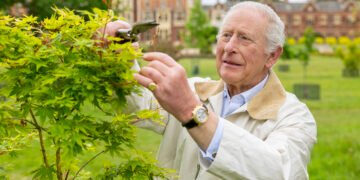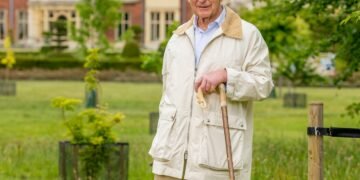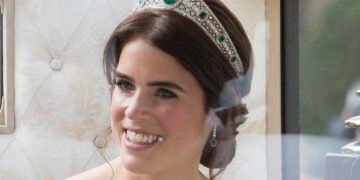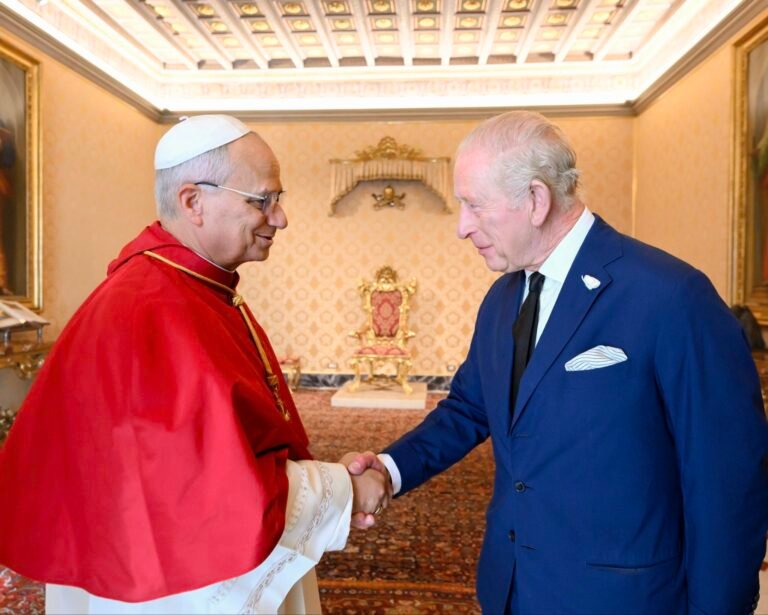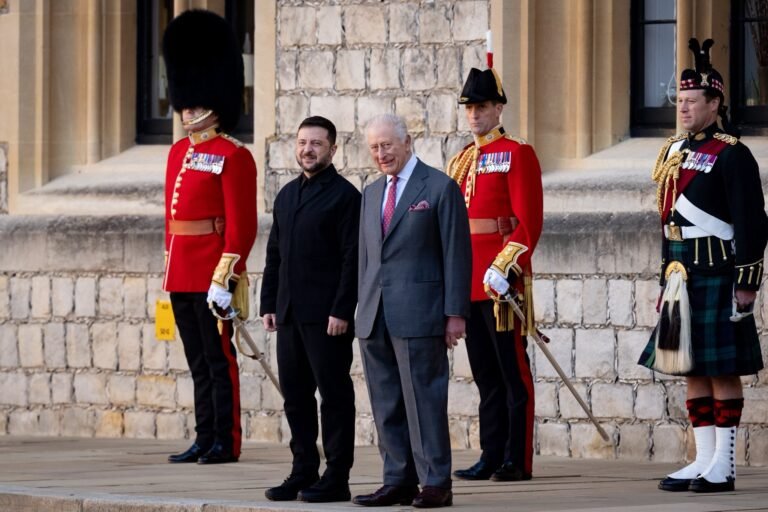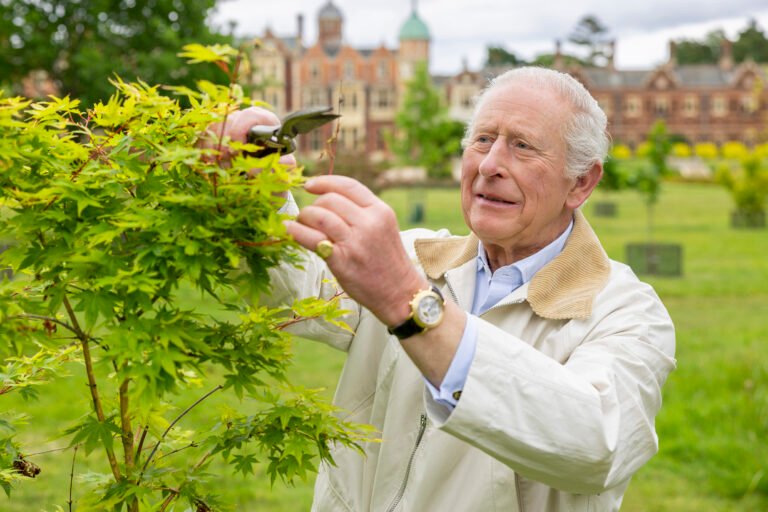This tiara is certainly The Queen’s favourite in her collection – and it might be ours too! The Girls of Great Britain and Ireland tiara was made by Garrard in 1893, in a swag and scroll design, with a lozenge band at the base.
Embed from Getty Images
Embed from Getty Images
Originally, the tiara featured 14 up-ended teardrop pearls in place of the brilliant diamonds at the top, giving extra height. The current brilliant diamonds were added in 1914 from another tiara in Mary’s collection.
As with many tiaras, it can be worn as a smaller coronet and even a necklace, but we have never seen it this way (we think!). The bottom section of the tiara, a row of lozenges and circles, was made to be detachable, as a bandeau, right on trend for the turn of the century.

It came to be in royal hands via Queen Mary – then Duchess of York – in 1893; money was raised by Lady Eva Greville, one of Mary’s ladies-in-waiting, to purchase a tiara as a wedding gift. It cost £1600, estimated to be about £207,000 in today’s money.
Extra monies raised (some £3000) were donated to charities supporting the widows and children of the victims of the HMS Victoria, which had sunk in the Mediterranean that year.
13 of the pearls from the original tiara design went into the Lovers’ Knot tiara, once loaned to the late Princess of Wales, now worn by The Duchess of Cambridge.


The Girls of Great Britain and Ireland tiara was given to Princess Elizabeth as a wedding gift from her grandmother in 1947. She reunited the tiara with its bandeau base in 1969, having worn it without for some time, as you can see above.
This is also perhaps The Queen’s most recognisable tiara: she has worn it for various portraits, which have been translated into coins and onto banknotes as well as stamps.



